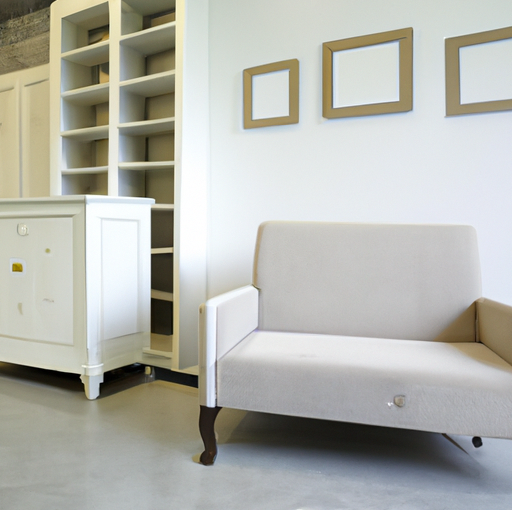Off gassing occurs when newly manufactured items in your home release volatile organic compounds (VOCs) and other hazardous chemicals, which can be particularly hazardous for infants and children.
Furniture off gassing can be a serious problem that can be mitigated by choosing non-toxic furniture such as solid wood with no VOC finishes and adhesives. Furthermore, steer clear of products made with particle board or MDF which contain formaldehyde.
Increase the Temperature
If you want to expedite the process of off-gassing furniture, try placing it outside in direct sunlight or higher temperatures. This will improve air circulation within the room; however, be mindful that this only works if there is proper ventilation present.
New furniture, like other products in your home, will emit toxic chemicals, especially volatile organic compounds (VOCs) which have been known to be carcinogenic and irritating to the respiratory system. VOCs are usually released from paints, stains and sealants used during manufacturing of new furniture as well as glues used in its assembly.
For new furniture, the most hazardous period for off gassing occurs within the first month or two after purchase. This is especially true of pieces made with formaldehyde – which is carcinogenic and highly irritating to eyes, nose, and throat.
To protect yourself against this, opt for non-toxic and organic furniture that is at least five years old or better. You can accomplish this by buying vintage or thrifted pieces that had their off gassing done years ago, or opt for newer items made with water-based glues and other non-toxic materials.
Opting for furniture made from natural wood or metal will help prevent off gassing, as these products typically do not contain adhesives that release toxic chemicals. Furthermore, look out for no-VOC paints, sealants and stains when shopping for furnishings.
Another way to reduce off gassing is by choosing organic furniture without any finishes or stains on it. This is especially important if the piece will be exposed to children or pets.
Some companies specialize in eco-friendly furniture, and have devised ways to reduce waste and fossil fuel usage during production. They collaborate with Forest Stewardship Council and Rainforest Alliance to source their wood sustainably, avoiding long distance transports.
It’s wise to let new furniture air out for a week before bringing it indoors, if possible. This allows the chemicals inside to escape and enter the outdoor air. Ideally, all your doors and windows should be open for airflow; not only will this help the item off gas faster but also improve your home’s air quality by reducing VOCs present.
Increase the Ventilation
If your furniture is releasing VOCs, there are steps you can take to expedite the process. The most crucial thing is increasing ventilation in the room where it will be stored.
When new furniture is exposed to the air for an extended period, it may release volatile organic compounds (VOCs). These chemicals are toxic and particularly detrimental for individuals with respiratory issues, asthma, or allergies.
To reduce VOC emissions, purchase furniture and products made of natural materials from home improvement stores or online. These can be easily found online or in physical locations.
You can reduce the amount of VOCs absorbed into new products by allowing them to sit outside for some time before taking them inside your home. Doing this ensures the VOCs aren’t reabsorbed into the item and helps it off gas much quicker.
Another way to increase ventilation in a room is by opening windows and doors so more air can enter the space. This will reduce the amount of VOCs emitted by furniture, making it simpler for them to off gas.
In addition to opening windows and doors, you can also increase ventilation in a room by raising the temperature. Heat helps expedite the off gassing process by increasing evaporation rate.
Summer months, when indoor temperatures are at their highest, are prime months for off gassing to occur more rapidly. This is because heat causes VOC emissions to peak and increase rapidly.
Additionally, you can reduce the amount of off gassing by avoiding products made from synthetic materials like paints, glues and carpet. Instead, opt for items made from natural elements like wood, stone and metal.
To increase ventilation in a room, you can use your HVAC system to raise the temperature of the space and push more air through it. You may also open windows and doors for better airflow, or utilize fans or heaters inside of the space to facilitate natural circulation of oxygen and heat.
Place it Outside to Air
When it comes to off gassing new furniture, there are several methods. Unpacking it outdoors or in a garage for several weeks can expedite the process. You might also consider investing in an efficient air purifier with activated charcoal or carbon filter for even faster results.
Finally, you could try using a more efficient way of venting off fumes by installing a fan in your system. This will not only increase oxygen flow into your home but also help remove some of the off-gassing toxins from your system – particularly your lungs.
The great news is that it will only take you a few minutes of your time and be worth it in the end. Hopefully this is your first step toward living a healthier, greener lifestyle! Taking time out of your busy day to eliminate household chemicals and pollutants will benefit not only yourself but your family as well as our planet as a whole – good luck!
Encase it
Kurt Rhoads, an environmental engineer and assistant professor at Case Western Reserve University, notes that many materials used to coat furniture contain solvents and other compounds which can be hazardous if inhaled. One such compound is formaldehyde, which has been linked to cancerous growths.
Encasing furniture should always use materials that sequester offgassing, such as Mylar, foil-backed tarps, foil, plastic sheets or activated carbon cloth. If possible, opt for the highest quality material available.
The size of a piece of furniture can affect how long it takes for chemicals to evaporate. Larger items tend to offgas more rapidly than smaller ones, and warmer temperatures may accelerate this process even further.
Before assembling furniture, it’s essential to understand its components. This will give you the best idea of its offgassing potential.
For instance, if your sofa is off gassing, its cushions likely contain polyurethane foam with high levels of VOCs. Furthermore, engineered wood inside the frame may release formaldehyde when assembled – so be sure to determine what material it’s constructed from before assembly.
If you can’t identify the material, use airflow and heat to speed up offgassing (though UV light may discolor some fabrics). Take it outside or set it in a spare room that’s as warm as possible – just be sure not to get too humid or exposed to too much sun bleaching.
Another great option for your house is adding a plant like a citrus tree. Not only does this have many benefits for you, but it also filters the air in your home and eliminates toxins from it.
When purchasing furniture, secondhand or vintage is usually a wise idea since these pieces have had time to offgas their chemicals and may contain less toxic elements. This is especially pertinent for people with children or the elderly as they can be more vulnerable to chemical effects from offgassing chemicals.






